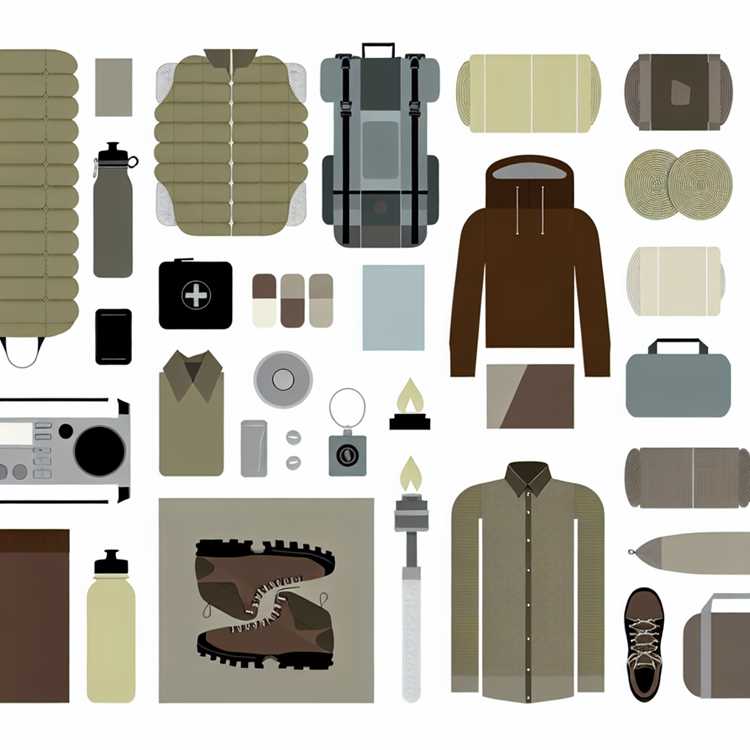
Pack for a base weight under 8 kg (17.6 lb) and keep total pack weight below 12–14 kg (26–31 lb) for multi-month trips; add +1–2 kg for cold, wet climates and subtract 1–2 kg if you can resupply every 2–4 days.
Limit clothing to measurable pieces: 3 merino or synthetic base layers (one worn, two spare), 1 light insulating layer (300–450 g), 1 packable down jacket (200–350 g) and a waterproof-breathable shell (200–400 g). Expect total clothing weight of about 1.2–1.6 kg. Carry 2–3 pairs of socks, one convertible pant, and compress clothes into a 10 L dry sack to save space.
Choose a shelter that matches conditions: a 3-season tent typically weighs 700–1,200 g; tarp + bivy setups run 400–800 g. Opt for a sleeping pad in the 250–450 g range (R-value 2.5–3.5 for three-season use) and a sleeping quilt or bag rated to at least -5°C (23°F) for colder regions. Test-setup shelters at home and record actual packed volumes.
Plan food and resupply by days: carry 500–700 g of dehydrated food per day to meet ~2,500–3,500 kcal/day depending on effort. For a 5-day stretch bring 2.5–3.5 kg of food. Water strategy: carry 1–2 L in humid areas and 2–4 L in arid zones; use a pump filter (~100–150 g) or UV purifier (~80–100 g) and refill at known sources to avoid excess weight.
Stoves and cookware: gas canister setups range 120–250 g for stove + small pot; alcohol stoves with titanium pot weigh 120–200 g but require liquid fuel (estimate 200 ml per 7–10 days). Choose a 700–900 ml pot and a lightweight spoon; total cooking kit target should be 300–500 g for solo hikers.
Footwear and repairs: carry one pair of trail runners or low hikers (350–500 g) and lightweight sandals (150–250 g) for camp. Pack a repair kit (10–15 g of duct tape wrapped around a credit card, 2 spare laces, needle + thread, 2 safety pins) and a compact multi-tool (40–70 g). Keep heavy items close to your spine and at hip level to improve balance and reduce fatigue.
Electronics and safety: phone + lightweight power bank (250–400 g total), headlamp (50–80 g) with >100 lumens and extra batteries if needed, and a compact first-aid kit (120–200 g) tailored to personal needs. Weigh each item before departure and trim any single item that costs more than 50 g in excess compared to a lighter alternative.
Create a pre-trip checklist with target weights for each category (clothing 1.5 kg, shelter 0.8 kg, sleep system 0.6 kg, food per day 0.6 kg, water capacity variable). Repack after one night out to identify nonessential items and aim to reduce base weight by 300–700 g before longer segments.
Reduce Base Weight: 6 Items to Replace or Remove Before a Multiweek Trip
Swap heavy systems for lighter alternatives
Replace a bulky three-season sleeping bag (40–60 oz / 1.1–1.7 kg) with a down quilt or high-fill down bag: choose 800–900+ fill down rated for expected low temps and expect weights of 12–20 oz (340–570 g) for summer to mild-three-season quilts – a typical saving: 24–40 oz (680–1135 g). Use a lightweight liner (4–6 oz / 110–170 g) if you want extra warmth and hygiene without carrying a heavier bag.
Swap leather or heavy backpacking boots (45–60 oz / 1.3–1.7 kg per pair) for trail runners or light hikers (18–28 oz / 510–800 g per pair). That change commonly saves 1–1.5 lb (450–680 g) per footware pair and reduces foot fatigue on long miles. Bring minimal camp sandals (4–8 oz / 110–225 g) instead of a second pair of shoes.
Cut cookware, clothing and extras
Replace a heavy multi-piece cookset (10–20 oz / 280–570 g plus utensils) with a single titanium/aluminum pot or mug-pot and a folding spork. A titanium 700–800 ml pot weighs ~2–4 oz (55–115 g) versus a multi-piece set at 12–18 oz (340–510 g), saving 8–14 oz (225–400 g). If you mostly rehydrate meals, consider a rimmed cup only – less weight, quicker clean-up.
Remove denim and redundant cotton; carry merino or synthetic garments that dry fast. Pack 1–2 merino tops (4–8 oz / 110–225 g each), one insulating layer (8–12 oz / 225–340 g), one ultralight waterproof shell (6–10 oz / 170–285 g) and two pairs of underwear. Target clothing weight under 40–48 oz (1.1–1.35 kg) for multiweek trips; laundering every 7–10 days keeps volume low.
Replace liquid toiletries and bulky bottles with solid or concentrate options: shampoo bar (1.5 oz / 42 g) instead of an 8 oz bottle saves ~6.5 oz (184 g); a 15 ml multi-use tube (face/body) replaces several full-size bottles and saves 3–8 oz (85–225 g). Put liquids in 10–30 ml leakproof bottles only for critical items.
Leave the laptop at home and carry a phone or tablet plus a single compact power bank. A typical 3 lb (1.36 kg) laptop replaced by an e-reader or tablet (6–12 oz / 170–340 g) plus a 10,000 mAh power bank (6–8 oz / 170–225 g) saves roughly 2–2.5 lb (900–1135 g). Remove non-critical extras: hardcovers, multiple chargers, and spare cords; digitize maps and documentation and save weight.
Clothing Capsule and Laundry Plan: Pack 10 Pieces and Schedule Weekly Washes
Pack a 10-piece core clothing capsule (exclude socks, underwear and sleepwear) and run a full wash every 7 days; that balance keeps weight low and odor manageable.
- 10-piece capsule (items and target weights):
- 2 x short-sleeve merino tees (170–200 g each) – day-to-day wear, low odor.
- 1 x long-sleeve merino shirt (200–230 g) – sun protection and cool evenings.
- 1 x lightweight synthetic or merino base-layer bottoms (150–180 g) – sleep and cold layering.
- 1 x lightweight fleece or synthetic midlayer (220–300 g) – insulation during stops.
- 1 x packable insulated jacket (synthetic or down, 300–450 g) – compact warmth.
- 1 x waterproof breathable rain shell (200–350 g) – wind and rain protection.
- 1 x convertible hiking pants (zip-off) or lightweight travel pants (300–400 g) – versatile day use.
- 1 x lightweight shorts (120–180 g) – hot-weather option and faster drying.
- 1 x buff or neck gaiter (30–50 g) – multiple uses: warmth, sun, sweat control.
- 1 x wide-brim or packable cap (30–70 g) – sun protection and quick-dry.
Carry underwear and socks separately: 4 pairs underwear and 3 pairs socks (1 lightweight liner, 2 wool or merino hiking socks) plus 1 pair camp shoes; rotate one pair of socks per day and replace liners daily if sweaty.
Weekly laundry schedule (sample):
- Day 1–6: Wear, air garments after use – hang shirts and base layers inside-out for 6–8 hours to cut odor buildup.
- Day 7 (Laundry day): Wash the entire capsule and underwear/socks. Do machines in hostels or handwash at sinks if machines unavailable.
- If a garment gets heavily soiled or sweaty mid-week, spot-wash immediately and hang to dry; only full wash on scheduled laundry day unless needed.
Handwash method (fast and reliable):
- Fill sink or bucket with ~5 liters lukewarm water (20–30°C).
- Add 1 tablespoon (≈15 ml) mild technical detergent or travel soap per 5 liters.
- Agitate each garment for 60–90 seconds, then soak 10–15 minutes for merino; avoid soaking insulated jackets longer than 5 minutes.
- Rinse twice with clean water (2 x 5 L) until soap runs clear.
- Press out excess water gently; avoid twisting down garments.
- Roll each item in a microfiber towel with firm pressure for 30–60 seconds to remove 60–80% of moisture.
Machine wash tips (hostel laundromats):
- Use cold or cool cycle and a gentle setting; use one small cap (15–20 ml) of detergent per load.
- Choose a low-spin option or run an extra short rinse to protect fabrics.
- For insulated jackets, use a down/technical cleaner and a low-heat tumble dry with two tennis balls for 20–30 minutes to restore loft; if no dryer, air-dry and regularly shake to redistribute insulation.
Drying times and placement (estimates):
- Merino tee: 2–4 hours in direct sun and wind; 6–12 hours in shade or humid conditions.
- Fleece: 6–12 hours open-air; 12–24 hours in damp climates.
- Rain shell: 2–6 hours depending on ventilation.
- Insulated jacket: 24–48 hours air-dry if no dryer; avoid compressing until fully dry to prevent odor and mold.
Practical packing & maintenance tips:
- Use one mesh laundry bag for dirty clothes and a small waterproof dry bag for wet items.
- Store clean capsule garments in a single compression cube to reduce bulk and keep them separate from dirty items.
- Carry a 30–50 ml travel bottle of technical detergent (enough for ~15–20 washes) and a small stain bar.
- Repair small tears immediately with a needle-and-thread or gear tape to avoid replacement mid-trip.
- Target total clothing weight of 2.0–3.0 kg (4.5–6.5 lb) for the capsule (excluding footwear) to keep pack comfortable for long-term travel.
- Rotate shirts daily and hang used garments in ventilated areas; this reduces laundry frequency and prolongs fabric life.
Organize Gear by Access: Packing Cubes, Accessibility Zones, and Quick-Grab Items
Pack by frequency: put daily-use items in hipbelt pockets and external compartments, keep the top lid and main-access pockets for things you need within 5–10 minutes, and store low-priority gear at the bottom of the main compartment.
Packing cubes – sizes, placement, and materials
Use a small system of 3–5 cubes with fixed roles so you always know where things live. Recommended cube sizes and roles:
– 0.5–1 L electronics pouch for cables, battery banks and phone (use mesh or one with a clear window);
– 1–2 L underwear & socks cube (soft fabric, compress lightly);
– 3–5 L shirts/casual layer cube (fold or roll to fit);
– 6–10 L insulation/extra layer cube (down jacket goes in a 6–8 L compression-style cube or small dry sack);
– 10–16 L bulk cube for camp clothing or soft items you won’t touch during the day.
Place heavier cubes low and centered against the pack frame to maintain stability; put the 3–5 L daily-clothing cube higher for quicker access at camp. Choose one mesh cube for wet/dirty items so moisture and odor don’t spread. Color-code cubes or add waterproof adhesive labels (use a contrasting color for the daily cube) and keep the labelling consistent across all trips.
Accessibility zones and quick-grab item list
Divide the pack into four access zones and assign pockets accordingly:
– Zone A – hipbelt and shoulder pockets (seconds-to-reach): phone, snacks (100–200 g portions), sunglasses, lip balm, a 30–80 g pocketknife, 50–100 g headlamp, and small GP kit (2–4 adhesive bandages, blister pads).
– Zone B – top lid/brain pocket (minutes-to-reach): sunscreen, map/permits in a 1 L zip pouch, toiletries, lightweight rain shell (200–300 g), small first-aid kit (alcohol wipes, tape, 6 ibuprofen tablets).
– Zone C – main compartment top/front (within-camp access): water filter, stove and fuel canister if used daily, cook pot, snacks resupply.
– Zone D – main compartment bottom/back (rare access): sleeping bag in a 10–16 L compression sack, bulk food, spare footwear.
Protect quick-grab items with waterproofing: put documents and electronics in a 1 L dry bag or heavy-duty ziplock; use 0.5–1 L silica or zip pouches for batteries and cords. Keep items in Zone A under 300 g per pocket to avoid hipbelt sag and maintain comfort while hiking.
Adopt two simple routines: 1) always stow the same item in the same pocket; 2) run a 60-second access check after packing – reach for phone, snacks, rain shell, map – and adjust until each access takes under 10 seconds. Replace worn cubes and repair zipper pulls as soon as functionality drops; small repairs keep access predictable and fast.
Food Strategy and Resupply: Portioning, Shelf-Stable Staples, and Finding Replenishment Points
Pack pre-measured daily food bags that deliver 2,800–3,500 kcal for big mileage days and 2,200–2,800 kcal for lighter days; label each bag with total calories and main allergens.
Calculate target calories using 30–45 kcal per kg of body mass per day: 30 kcal/kg for moderate hiking (15–25 km/day), 45 kcal/kg for long-distance pushes (35+ km/day). Adjust upward by 200–500 kcal on cold or high-altitude days.
Aim for meal breakdowns that support steady energy: breakfast 600–900 kcal, lunch 400–700 kcal, dinner 800–1,200 kcal, plus 300–600 kcal of snacks spread through the day. Favor higher-fat snacks for concentrated calories between meals.
| Staple | Approx kcal/100 g | Typical pack size (g) | Shelf stability |
|---|---|---|---|
| Nuts (mixed) | ~600 | 100–200 | 6–12 months, keep cool |
| Peanut/almond butter | ~590 | 50–200 | 6–12 months unopened; 1–2 months opened |
| Olive oil | ~884 | 30–100 ml | 12–24 months unopened; carry small bottle |
| Dehydrated meals (freeze-dried) | ~400–500 | 100–200 | 1–5 years (check packaging) |
| Instant oats | ~380 | 50–150 | 12–24 months |
| Instant couscous/rice/pasta | ~350–370 | 100–200 | 12–24 months |
| Chocolate (dark) | ~500–550 | 40–100 | 6–12 months; heat sensitive |
| Jerky / cured meat pouches | ~250–350 | 25–100 | 6–12 months sealed |
| Tuna/chicken pouches (shelf-stable) | ~150–250 | 50–100 | 1–3 years sealed |
| Powdered milk / protein powder | ~400–500 | 30–100 | 6–24 months |
Weigh ingredients with a kitchen scale and pack each day’s dry food into a 1L zip-top or vacuum pouch. Portion common items: 100 g oats (380 kcal) for breakfast, 80 g instant pasta (280 kcal) for lunch, 120 g dehydrated meal (480 kcal) for dinner, plus 60–100 g mixed nuts (360–600 kcal) as snack. Include a 30–50 ml oil bottle (270–450 kcal) to boost dinner calories and add flavor.
Compress bulky items (use vacuum or roll ziplocks) and double-bag high-fat or oily foods. Distribute weight so heavier food sits close to your back and under the lid for easier access during breaks. Keep one sealed extra meal and snack set for unexpected delays (add 1–2 days’ worth of calories where possible).
Schedule resupplies every 3–7 days in areas with frequent services; space them 7–12 days only where towns or post offices are farther apart. Use trail guidebooks, official trail websites, and trail-specific apps to map towns, hiker hostels, outfitters, and grocery stores. Call small-town post offices or outfitters ahead to confirm hours and hold-for-pickup procedures.
For mail drops, address packages clearly: your full name, trail name (optional), expected arrival date, “Hold for Pickup,” destination post office, and a local phone number. Ship with delivery that includes tracking and allow an extra 1–2 days buffer for delays. Include an insulated or rigid item only if basecamp access and carrier rules permit.
When resupplying in town, prioritize fresh produce, cured proteins, cheese (consume within 2–4 days), and any bulk calories you ran low on (nuts, oils, chocolate). Buy bulky, low-density carbohydrates only if you have room in the pack; otherwise replace with higher-energy, lower-weight options.
Quick checklist: measure daily calories, pack labeled single-day bags, carry a small oil bottle and concentrated fats, keep one to two emergency days of food, confirm mail-drop details before shipping, and check local opening hours before routing resupplies.
Q&A:
How can I reduce pack weight for a multi-month trek without losing comfort?
Choose multi-use gear and cut duplicates. Weigh every item before you leave and set a realistic target base weight you can live with. Swap heavy cookware, tents and jackets for lighter alternatives or shared items if you travel with others. Prioritize a solid sleep system and reliable footwear, since those affect how well you function each day. Minimize packaging, use refillable containers, and carry only tools you can use for common repairs. Trial your setup on short trips and remove items you never reach for.
What clothing strategy works best when laundry access is limited?
Build a compact wardrobe: one breathable base layer, one insulating layer, one waterproof shell, two pairs of quick-dry socks, and convertible pants. Pick fabrics that resist odor and dry fast, such as merino or technical synthetics. Wash small loads frequently by hand and air dry them on the pack or under a shelter. Rotate close-to-skin items more often, and carry a tiny sewing kit and a stain remover pen to stretch garment life. Use lightweight zip bags to separate dirty clothes and keep the rest fresh.
How should I choose a sleeping bag and pad for mixed climates encountered on a long trip?
Look at temperature ratings and how the bag performs when damp. Down provides excellent warmth-to-weight and compresses small, while synthetic keeps some loft when wet and dries faster. A three-season bag covers most situations; if you expect occasional subfreezing nights, add a lightweight down jacket or a sleep liner for extra warmth. For pads, pick an R-value that handles the coldest ground you’ll meet — an insulated pad can reduce the need for extra clothing in the bag. Test combinations of bag, pad and clothing before heading out and plan for water protection so insulation stays dry.
How do I plan food resupply for a months-long route that alternates towns and remote sections?
Map towns, grocery options and distances between resupply points, then estimate daily calorie needs based on expected mileage. Carry versatile staples that store well (oats, pasta, rice, nuts, powdered milk) and lightweight proteins for remote stretches. In towns, buy fresh produce and refill bulk items to lighten the pack. Keep a small emergency ration of high-calorie bars and electrolyte tablets. When resupply windows are tight, pre-plan pickup points or consider mailing small boxes to post offices or hostels along the route.
Which repair and hygiene items should I not forget for extended backpacking?
Repair kit basics: a multi-tool, needle and heavy thread, fabric patches, spare cord, several zip ties, safety pins, a few meters of tape wrapped compactly, and patches for tubes if you cycle. Bring spare stove parts that match your model, a lighter, and a tiny bottle of lubricant. Hygiene: travel-size biodegradable soap, toothbrush, small toothpaste, quick-dry towel, hand sanitizer, menstrual supplies as needed, and a small first-aid kit with blister care. Store small items in clear bags for quick access and easier checks at crossings or accommodations.




